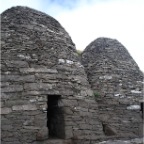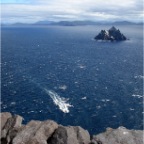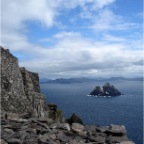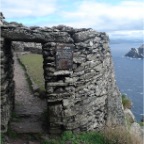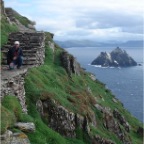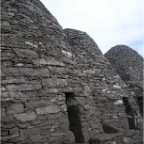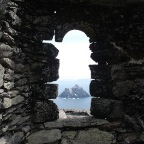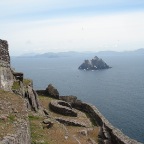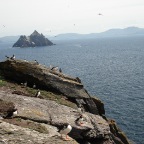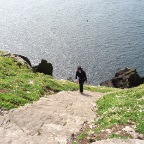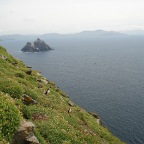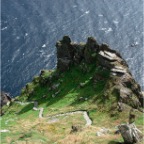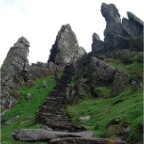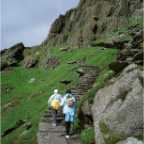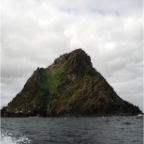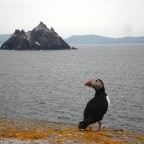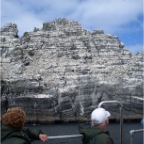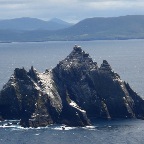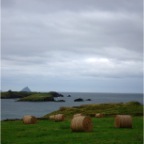Skellig Rocks (Skellig Michael + Little Skellig)
Skellig Michael is an enormous mass of rock rising out of
the Atlantic around 200 metres. It is not known when the
first monks settled on Skellig Michael, the style of the
stone houses suggest the 6th Century onwards. During the
9th Century the island has endured some Viking raids
attacks, only a few monks did survive. The community at
Skellig Michael has apparently never been huge, probably
about 12 monks and an abbot. In the 12th Century the
monks abandoned the island and moved to the Augustinian
Monastery at Ballinskelligs on the Irish mainland. The
Skellig Rocks became an UNESCO World Heritage Site in
1996 and it is still today one of the least accessible
monasteries in the world. Apart from the sea conditions
(only if the weather forecast is stable the ferries will
leave Ireland to bring you to the Skellig Rocks) once you
are there you will have to climb more than 600 stone
steps carved out of the bare rock by the monks more than
1,000 years ago. Recently restrictions have been imposed
on access, only small groups can visit Skellig Michael.
George Bernard Shaw, the Nobel Prize winner in Literature
in 1925, said after visiting this gigantic site in 1910:
'Whoever has not stood in the graveyard on the summit of
that cliff among the beehive dwellings and beehive
oratory does not know Ireland through and through'.
